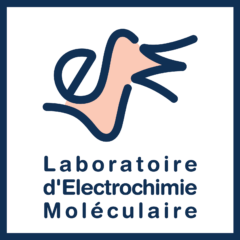Operando Spectroelectrochemistry Unravels the Mechanism of CO$_2$ Electrocatalytic Reduction by an Fe Porphyrin
Résumé
Iron porphyrins are molecular catalysts recognized for their ability to electrochemically and photochemically reduce carbon dioxide (CO$_2$). The main reduction product is carbon monoxide (CO). CO holds significant industrial importance as it serves as a precursor for various valuable chemical products containing either a single carbon atom (C1), like methanol or methane, or multiple carbon atoms (Cn), such as ethanol or ethylene. Despite the long‐established efficiency of these catalysts, optimizing their catalytic activity and stability and comprehending the intricate reaction mechanisms remain a significant challenge. This article presents a comprehensive investigation of the mechanistic aspects of the selective electroreduction of CO$_2$ to CO using an iron porphyrin substituted with four trimethylammonium groups in the para position [(pTMA)Fe$^{III}$‐Cl]$^{4+}$. By employing infrared and UV‐Visible spectroelectrochemistry, changes in the electronic structure and coordination environment of the iron center can be observed in real‐time as the electrochemical potential is adjusted, offering new insights into the reaction mechanisms. Catalytic species were identified, and evidence of a secondary reaction pathway was uncovered, potentially prompting a re‐evaluation of the nature of the catalytically active species.
| Origine | Fichiers produits par l'(les) auteur(s) |
|---|---|
| licence |


